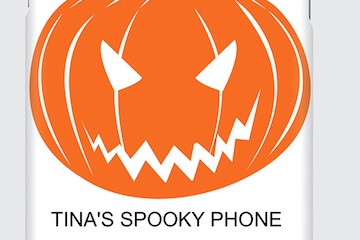Personalized and customized products can help smaller ecommerce businesses stay ahead.
Personalization can be simple as packaging a group of items as custom “kit” or providing engraved plates or quality vinyl decals.
Nike offers customized shoes on its website. Shoppers can, on select styles, choose the color of nearly every element and even name the shoe.
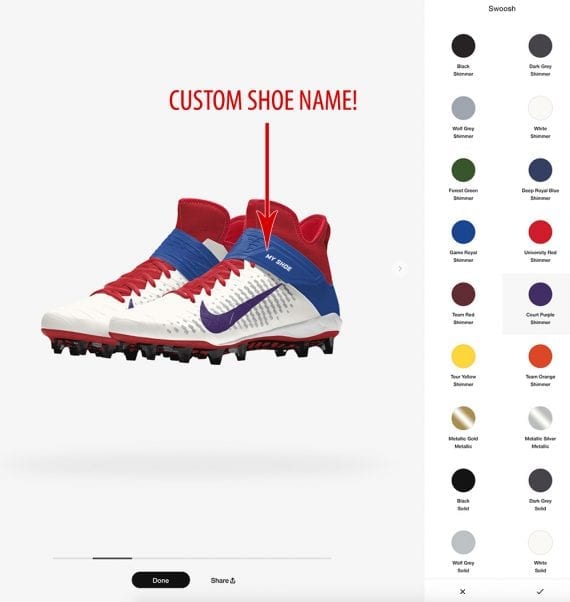
Nike even lets customers choose the swoosh color on select shoes!
To be sure, smaller sites are not Nike. But there are many opportunities to provide a similar experience.
Personalize common items. Investing in a quality decal printer (as well as training for the application process) can turn a basic phone case into a work of one’s own art. CaseApp, for example, provides high-end solutions, but most any merchant could produce similar results with minimal investment.
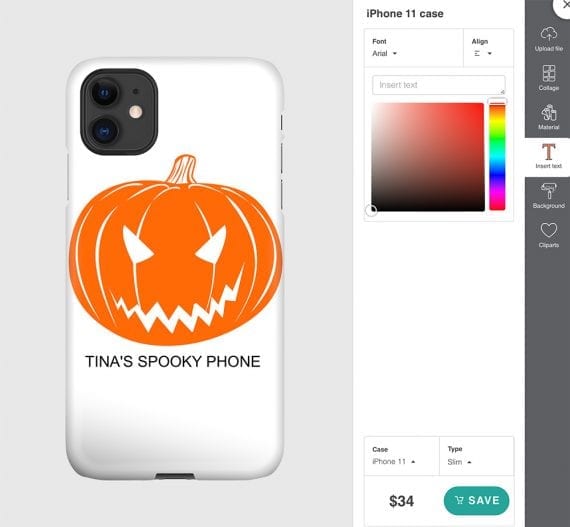
Allowing customers to upload their designs turns the most basic products into works of art, as shown in this example from CaseApp.
Not ready for shoppers to upload their designs? Start small by providing a selection of compelling clipart and fonts for custom creations. Many online sellers do this with good results.
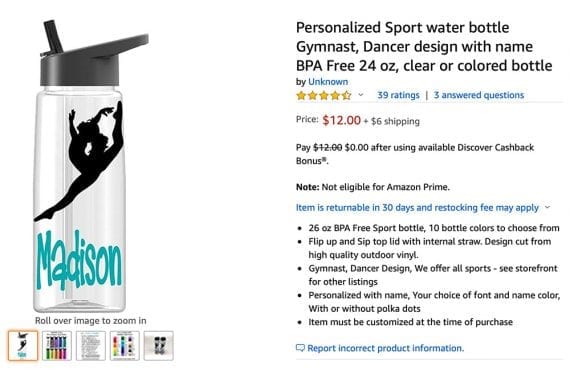
This water bottle on Amazon includes the ability to add a name.
Offer engraving or engraved plate applications. This classic personalization tactic has proved successful for many retailers selling gift items. If you’re not ready to invest in the equipment, consider partnering with a local trophy shop.
Offer kit-building. Bundling accessories as part of the product solves two customer pain points: not realizing an accessory (such as a cable) is necessary and not knowing which accessory to purchase. This is similar to how Apple sells computers. Beyond the internal configuration, shoppers select the mouse and additional software.
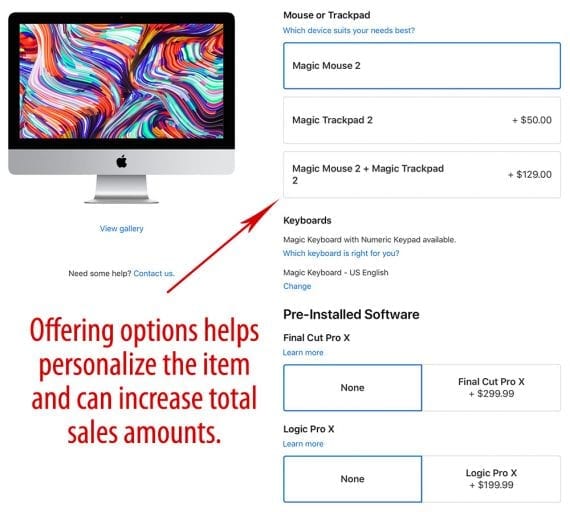
Apple presents add-ons to its computer offers as part of the customization process.
Customize accessories. Personalize a handbag, for example, by including the buyer’s initials on a purse charm that you attach before shipping. Similarly, keychains with a buyer’s initial can be attached to backpacks, sporting goods, and zippered coats.
Offer simple monograms. Applying pre-made monograms can also be a winning solution. Some of the latest include adhesive metal letters that will withstand extreme weather and sunlight.
Common Add-ons
When considering affordable custom options, start with items people often buy together. The purchase of a smartphone, for example, can spark many accessories, including a case, car charger, battery pack, ring holder, and wireless earphones. Presenting all the options together is a simple way for shoppers to “build” the device they want — while increasing the order value.

